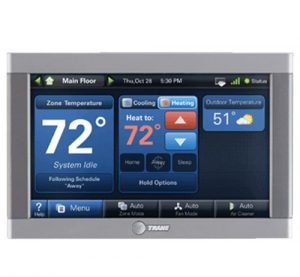It’s something we hear about all the time as part of homeownership horror stories. Mold. It’s an all too common problem in the world of home energy and home safety, yet one that can be avoided with the right combination of knowledge, care products and professional help.
While there are certainly some problems areas in the home, mold can grow almost anywhere in the home. It can be found on interior walls, carpet, damp or dirty clothing, food, paper, and even in places you can’t see, such as the backside of drywall, areas inside walls around leaking or condensing pipes, and above ceiling tiles.
As a follow up to a recent post on home humidity management, we have decided to put together a blog post series on mold eradication and prevention. If you think you could be at risk for mold growth in your home, don’t hesitate to get it taken care of right away, starting with these tips!
- Gain some moisture knowledge – monitor and manage the humidity inside your home. Knowing the humidity inside your home is the first step toward maintaining a moisture level that’s both comfortable and low risk for troubles like mold. Luckily, moisture and humidity can be easily monitored using a moisture meter purchased from your local hardware store if you don’t already have one. The Environmental protection agency recommends keeping your home better 30 and 60 percent humidity, depending on your individual needs, comfort and surrounding environment.
- Help prevent moisture inside your home with proper ventilation. Without proper ventilation throughout your home, especially in areas such as the kitchen or bathrooms, simple, everyday tasks could be causing mold to grow in your home. These areas that are prone to dampness or wetness more than others are sometimes the root causes of moisture problems that can lead to mold growth. Showering, cooking, doing laundry, etc. are a few of these common routines that a homeowner may not think can lead to moisture problems, but they can. Keeping your home ventilated to circulate the moist air and bring in fresh, dry air will help fight moisture problems inside. Also, remember that windows are your friends when it comes to moisture management as they can keep things properly ventilated—especially in well-sealed energy efficient homes.
- Dry wet areas inside your home immediately. Mold needs moisture to grow and spread. By drying wet areas such as condensation on the inside of windows or leaks from a heavy rainfall should be wiped up immediately. If you’re starting to develop damp carpet in your basement, think about removing it soon to dry things up. Mold spores can even spread quickly on items you may not think about such as wet or damp clothes near the laundry, bathroom rugs or even damp towels. Make sure all are replaced very regularly and kept dry.
Stay tuned for some additional moisture management and mold prevention tips on the blog shortly.
If you have been experiencing mold issues or if you think your home is at a higher risk and want some expert advice on avoid any problems in the future for your home, don’t hesitate to give us a call at BelRed today.







